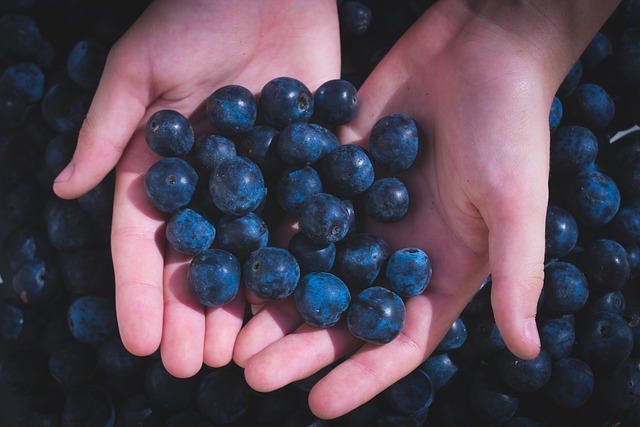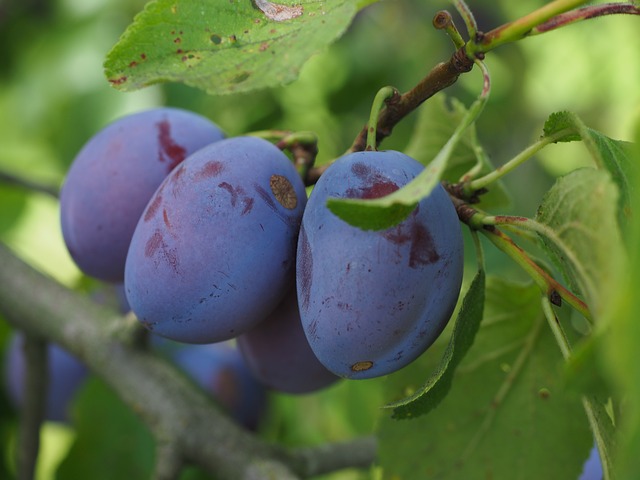
Higher antioxidant levels
Blueberries are one of the best natural sources of antioxidants. While antioxidants aren’t necessary for your body to function, they help protect your body from damage by free radicals. Your cells produce free radicals as waste products, but these particles can go on to hurt other cells. Eating blueberries regularly for just two weeks can help reduce damage to your cells by as much as 20%.
Healt Benefit Nutrients per Serving Prepare Blueberries
Higher antioxidant levels
Blueberries are one of the best natural sources of antioxidants. While antioxidants aren’t necessary for your body to function, they help protect your body from damage by free radicals. Your cells produce free radicals as waste products, but these particles can go on to hurt other cells. Eating blueberries regularly for just two weeks can help reduce damage to your cells by as much as 20%.
Nutrients per Serving A half-cup serving of blueberries contains:
- Calories: 42
- Protein: 1 gram
- Fat: Less than 1 gram
- Carbohydrates: 11 grams
- Fiber: 2 grams
- Sugar: 7 grams
How to Prepare Blueberries
Blueberries are native to temperate parts of North America. They are traditionally in season from April to September in the US, but are sold year-round as imports from South America. These tasty berries can be found in supermarkets, health food stores, and farmers’ markets around the country. Blueberries bring a mild, sweet flavor that’s perfect for baked goods and desserts. You can also enjoy raw blueberries by themselves as simple healthy snacks. Blueberries last longer if they’re refrigerated or frozen, and they can be added in fresh or frozen form to most recipes with similar results. Here are some suggestions for how to add blueberries to your daily diet:
Here are some suggestions for how to add blueberries to your daily diet:
- Eat blueberries raw as a snack.
- Bake a blueberry pie.
- Add blueberries to smoothies.
- Make blueberry juice.
- Include blueberries in pancakes.
- Dry blueberries for a raisin-like treat.
- Make a blueberry gazpacho.

What Is a Plum?
Plums belong to the same family as peaches, nectarines, and apricots. But plums are much more diverse than their stone-fruit cousins. They can be large or small, with red, purple, green, yellow, or orange skin, and pink, yellow, or orange flesh. They first grew in China thousands of years ago. Then plums made their way to Japan, parts of Europe, and America. Today, more than 2,000 varieties grow all over the world.
Healt Benefits Plum Nutrition Plum Preparation
Plum Health Benefits
The vitamin C in plums helps your body heal, build muscle, and form blood vessels. It's great for your eyes, too. Here are other ways that plums are good for your health:
- Heart disease. Phytochemicals and nutrients in plums lower the inflammation that triggers heart disease.
- Anxiety. A plum a day may keep anxiety away. When your antioxidants are low, anxiety can be high.
- Constipation Relief. Plums, like prunes, can also help keep things moving through your system. They have a lot of sorbitol, a sugar alcohol that acts as a natural laxative.
- High blood pressure and stroke. The potassium in plums is good for blood pressure control in two ways. It helps your body get rid of sodium when you pee, and it lessens tension in the walls of your blood vessels. When your blood pressure is lower, your odds of getting a stroke go down.
- Rich in antioxidants. These substances protect the body against the cell and tissue damage that can lead to diabetes, Alzheimer's disease, Parkinson's disease, and cancer.
- Reduce blood sugar. Plums are chock full of fiber, which helps slow down a blood sugar spike after you eat carbs. They can also boost your body’s production of adiponectin, a hormone that helps regulate your blood sugar levels.
- Bone health. Research on animals shows prunes (dried plums) may help reduce bone loss, and may even reverse it.
Plum Nutrition
- Calories: 76
- Protein: 1 gram
- Fat: Less than 1 gram
- Carbohydrates: 18 grams
- Fiber: 2 grams
- Sugar: 16 grams
Plum Preparation
You'll find plums in the grocery store and at farmers markets from May to October, though their peak season is July to August. Look for firm plums that have a slight "give" when you squeeze them gently. If your plum ripens before you're ready to eat it, put it in the fridge. If you need it to ripen quickly, keep your plum in a paper bag at room temperature overnight or up to 3 days.

What Is an Apple?
An apple is a crunchy, bright-colored fruit, one of the most popular in the United States. You’ve probably heard the age-old saying, “An apple a day keeps the doctor away.” Although eating apples isn’t a cure-all, it is good for your health. European settlers brought apples with them to the Americas. They preferred them to North America’s native crabapple, a small, tarter fruit.
Healt Benefit Apple Nutrition How to Buy and Prepare Apples
Plum Health Benefits
Apples can do a lot for you, thanks to plant chemicals called flavonoids. And they have pectin, a fiber that breaks down in your gut. If you take off the apple’s skin before eating it, you won’t get as much of the fiber or flavonoids. The fiber can slow digestion so you feel fuller after eating. This can keep you from overeating. Eating fiber-rich foods helps control symptoms and lessens the effects of acid reflux. An apple’s fiber can also help with diarrhea and constipation. Some studies show that plant chemicals and the fiber of an apple peel protect against blood vessel and heart damage. They also can help lower your cholesterol, and they might protect your cells’ DNA from something called oxidative damage, which is one of the things that can lead to cancer. Research shows the antioxidants in apples can slow the growth of cancer cells. And they can protect the cells in your pancreas, which can lower your chances of type 2 diabetes.
Apple Nutrition
Apples are low in sodium, fat, and cholesterol. They don’t offer protein, but apples are a good source of vitamin C and fiber.
One medium apple has about:
- 100 calories
- 25 grams of carbohydrates
- 4 grams of fiber
- 19 grams of sugar
- A variety of strong antioxidants
Risks Although apples do have health benefits, eating too many of them (like anything) can be bad for you. Too much fruit can cause you to gain weight. There are a few others things to keep in mind: Pesticides. Apples are one of the fruits that have high pesticide residues because bugs and disease are more likely to affect them. It’s always best to wash fruit like apples before you eat them. Seeds. You might’ve also heard that eating apple seeds or the core is bad for you. The seeds do have chemicals that turn into cyanide in your body, but you would have to crush and eat many seeds for them to harm you. In fact, an average adult would have to eat at least 150 crushed seeds for a risk of cyanide poisoning. The seeds are actually rich in protein and fiber. Interactions. Apple juice can interact with the allergy drug fexofenadine (Allegra). The juice makes the medicine hard for your body to absorb.
How to Buy and Prepare Apples
When you’re buying apples, make sure they feel firm and heavy. The skin shouldn’t have bruises, cuts, or soft spots. Make sure to store apples in your refrigerator to keep them fresh longer. They can be stored at room temperature, but they’ll ripen much faster. When you eat an apple, leave the skin on because it has more than half of the apple's fiber.